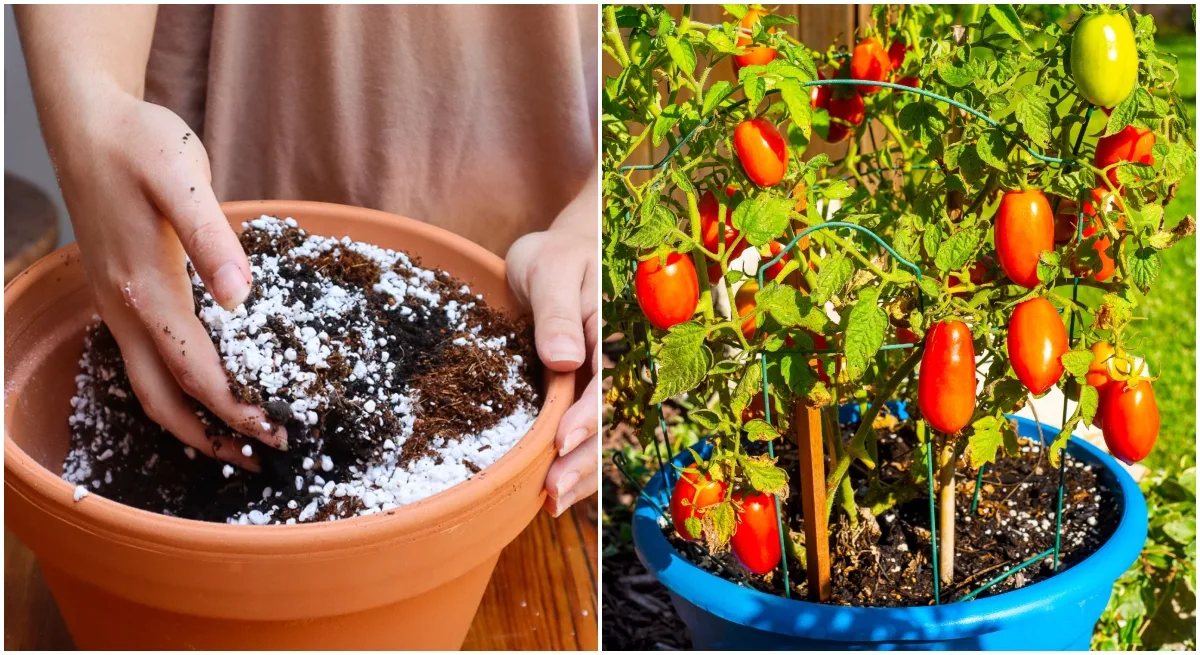
For those with little garden space, growing tomatoes in pots is a great way to get a full harvest without an entire tomato patch. However, the process is slightly different than it is outdoors, especially when it comes to soil.
The right potting soil is the foundation of any tomatoes you choose to plant. And with the right recipe, you can set yourself up for a world of success.
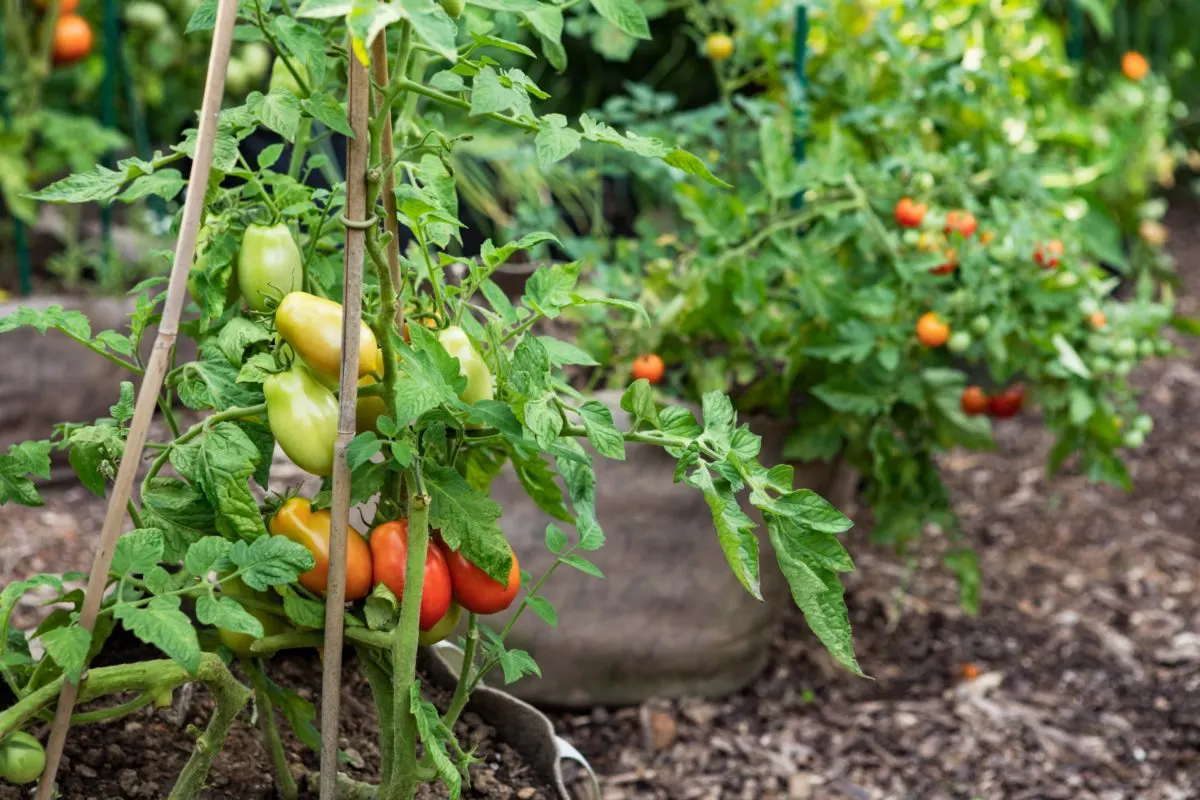
Growing Tomatoes In Pots: The Lowdown
Although tomatoes are one of the bigger plants in the vegetable garden, they are also candidates for container growth. With so much variety between the different cultivars, you can choose one perfectly suited to containers for the best harvest possible.
Determinate tomatoes – those that reach a predetermined height and ripen all at once – are generally easier to grow in containers than indeterminate varieties. Their size means you can find the perfect container without worrying that the roots will outgrow the available space before the end of the season.
There are also dwarf or ‘patio’ tomato varieties specially bred for growing in containers. These don’t mind being confined to small spaces and still produce impressive harvests with their limited area.
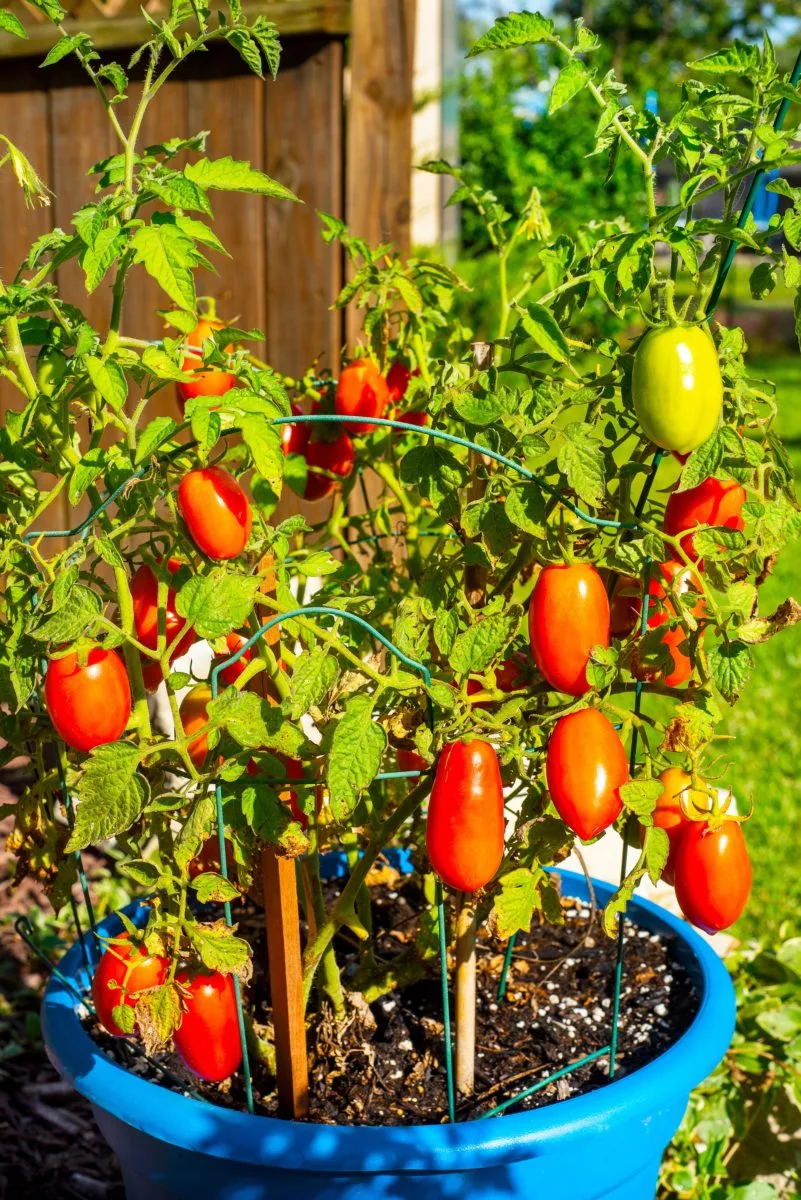
When choosing a container, depth is essential, along with good drainage. Tomato root systems spread deeply into the soil and won’t grow well in shallow planters. Their roots can also rot quickly if left to sit in soggy soil, making drainage holes an inescapable requirement.
Once you’ve got the right container, you also need to consider what you fill it with. As the foundation of plant health, the right soil mix will make or break your harvest.
Why The Right Potting Mix Is Essential
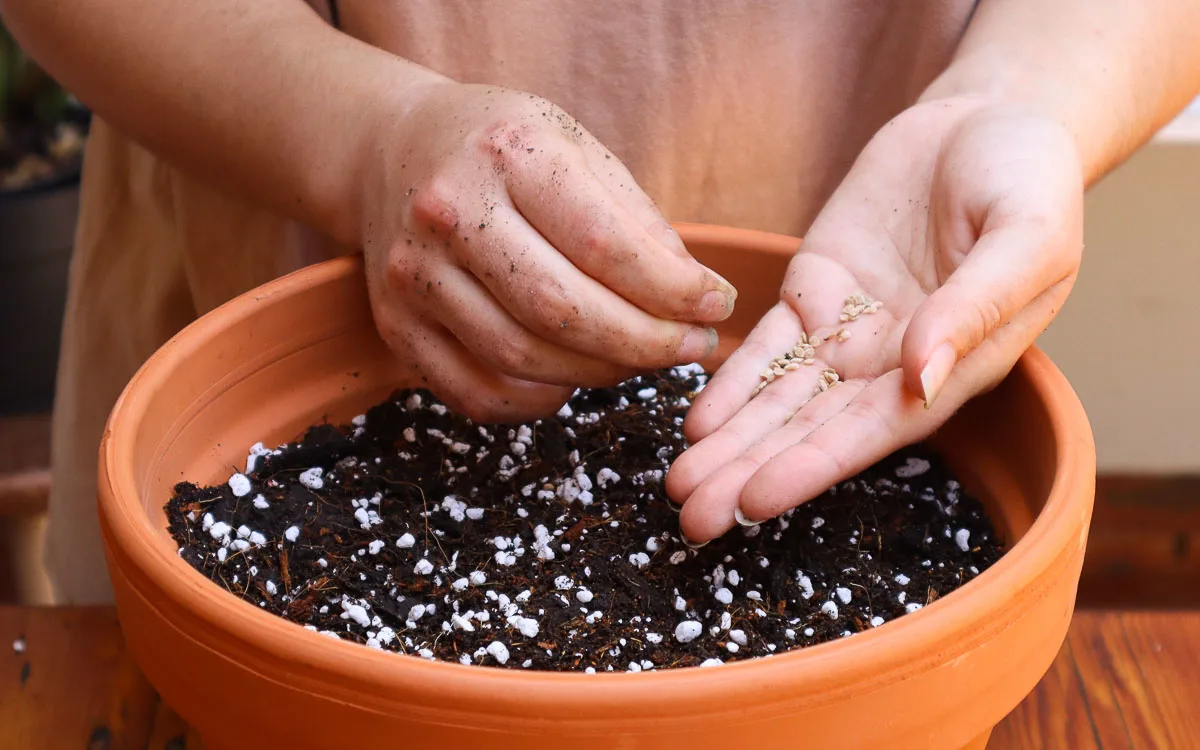
Amending soil before planting your tomatoes is a key component of a successful harvest. This involves adding compost (and perhaps a few other interesting items) as well as materials to adjust pH and consistency for that perfect loamy, rich texture.
As soil is the way roots absorb water, nutrients and oxygen, keeping them happy should be your number one priority. The way to do that is with soil that is light, well-draining and nutrient-rich. It needs to hold onto enough moisture to stop the plant from drying out – especially during fruiting. But it also cannot hold onto so much water that it suffocates the roots and causes them to rot.
If you’re growing tomatoes in containers, you have far more control over the soil mix because you decide what it consists of. There is no contending with the problems of the soil in your garden – you get to craft the perfect mixture from the beginning.
With complete control comes complete responsibility. If you use the wrong ingredients in the wrong ratios, your tomato plant likely won’t make it to the flowering stage, let alone fruiting. A perfect balance is required for perfect results.
The Components of Tomato Potting Mix
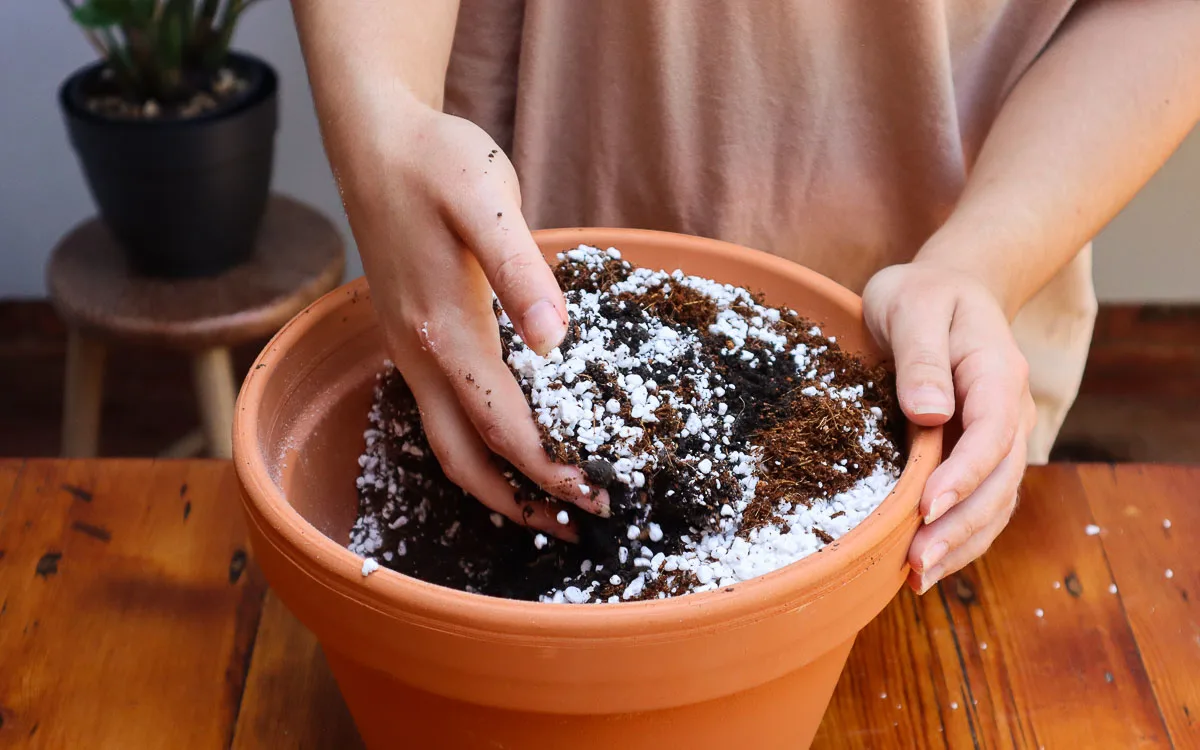
The right potting mix is a combination of elements that each serve a specific purpose in growth and root health. Some are interchangeable, which is why I will cover each of them, but I don’t use them all in my recipe.
One Common Ingredient You Really Shouldn’t Use
The first component gardeners often look to as a base is garden soil.
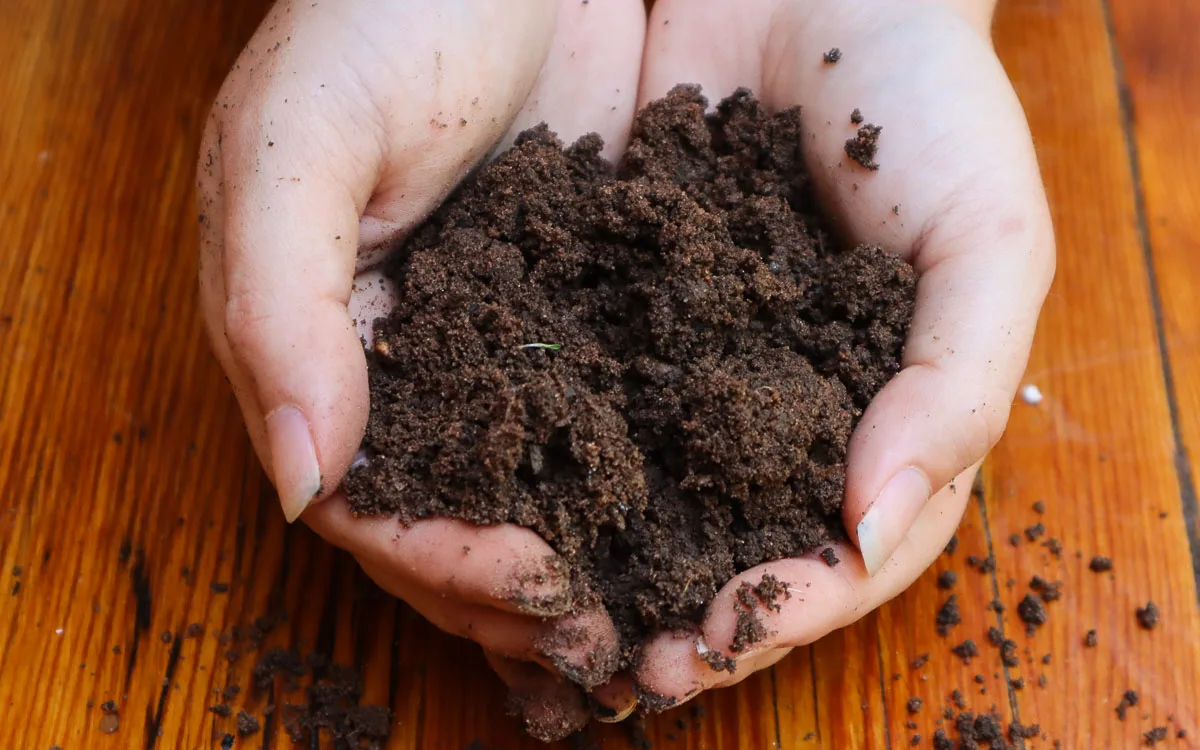
In theory it makes sense – tomatoes grow perfectly fine out in the garden, so using that same soil won’t be a problem. However, this is one potting mix ingredient I don’t use for a few reasons:
- Garden soil often becomes compacted, preventing drainage in smaller containers.
- It can carry pests and diseases from out in the garden to your plants before they become established.
- Garden soil may carry weed seeds that germinate, making regular weeding a necessity, even in containers.
The Base
Instead, I use a high-quality potting mix as the base of my tomato soil recipe, adding amendments to improve conditions.
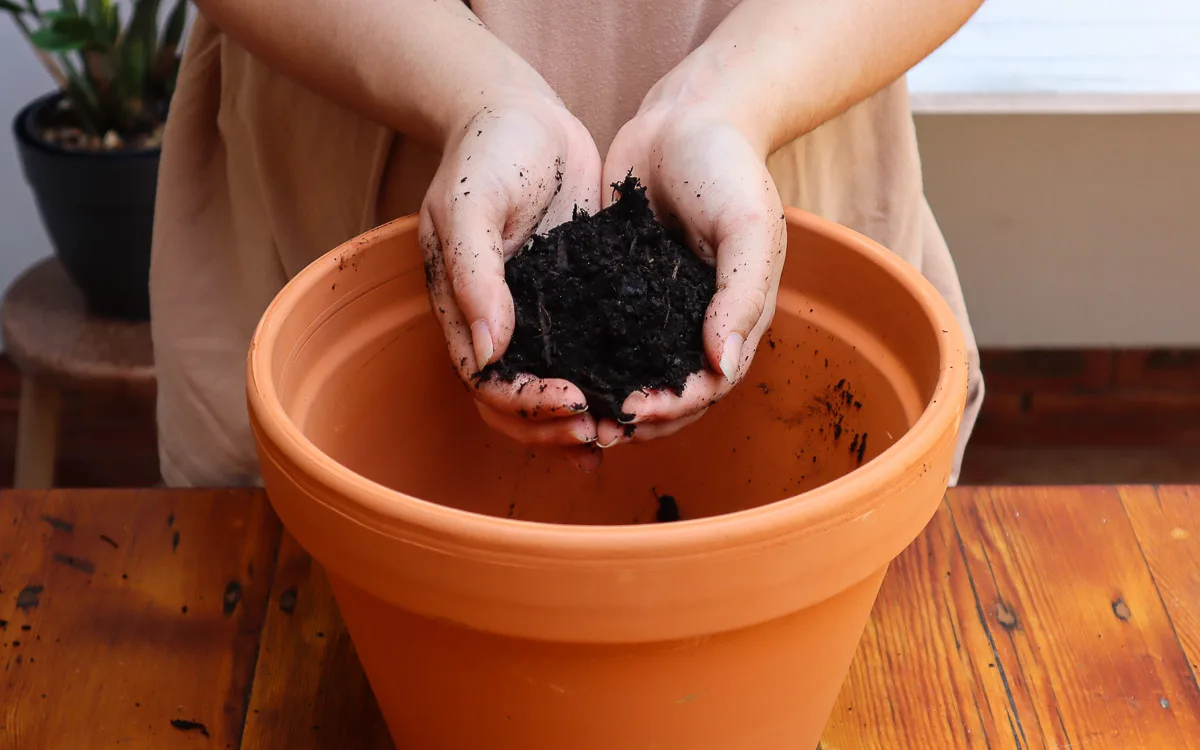
Potting mix doesn’t carry any potential pests or diseases and provides a sterile base to grow healthy plants from. These mixes are also far less dense than regular garden soil, designed for indoor and outdoor container growth.
You’ll be able to find potting mix at your local garden center, or you can try this Burpee Premium Potting Mix to use as your base.
The Additions
To add some healthy organic matter to this mixture, I also use a few handfuls of compost. Along with added nutrients, compost retains moisture well, stopping the container from drying out too quickly.
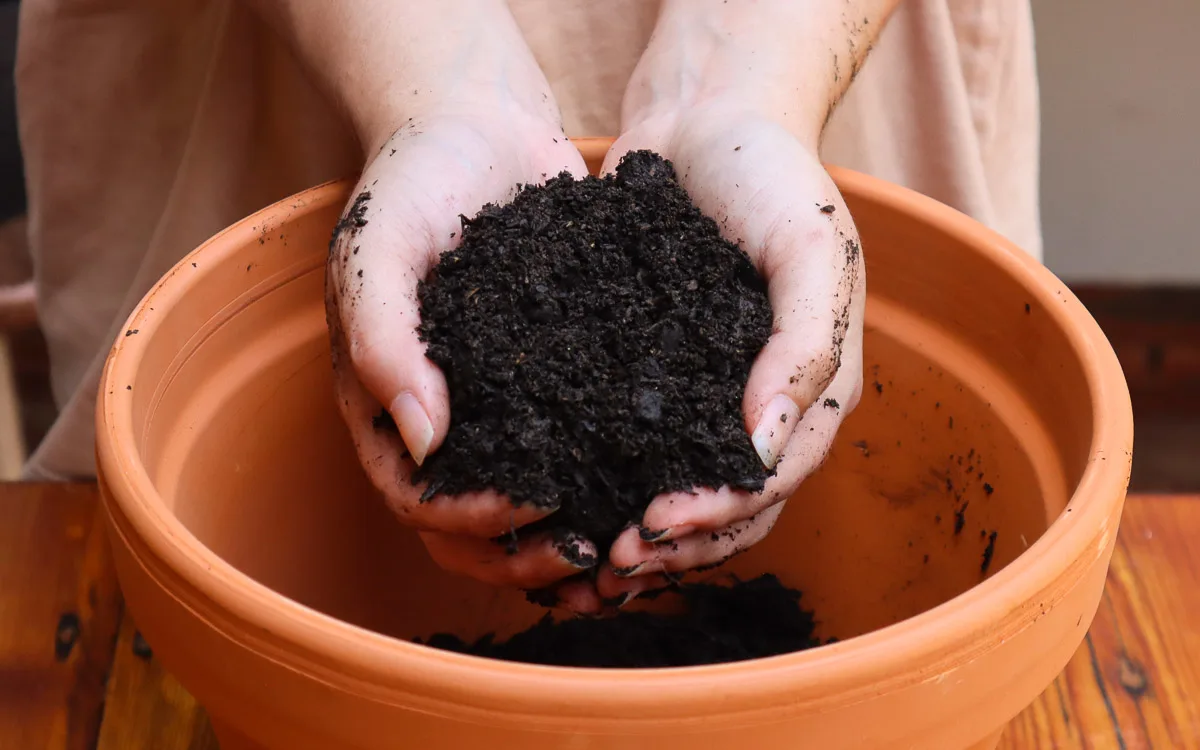
For drainage, you have a couple of options. I like to use perlite, mostly because I always have bags of the stuff from potting up houseplants.
These small balls of expanded volcanic glass increase the spaces between soil particles, allowing water and air to flow freely through the mixture. You can also use coarse river sand as your drainage material, but it tends to be much heavier and denser than perlite.
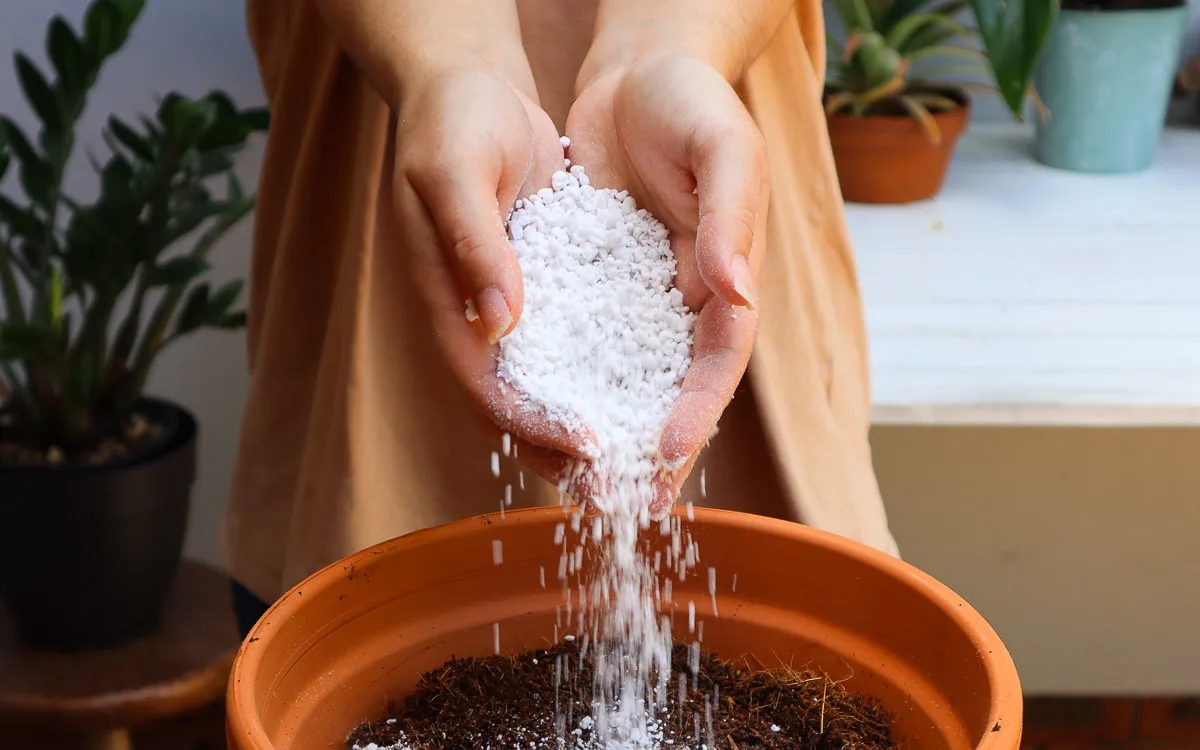
Finally, I mix in a good amount of coconut coir. Coir retains moisture well, holding up to 10 times its weight in water without weighing mixtures down or becoming dense. It serves the same function as peat moss but is considered a more sustainable alternative.
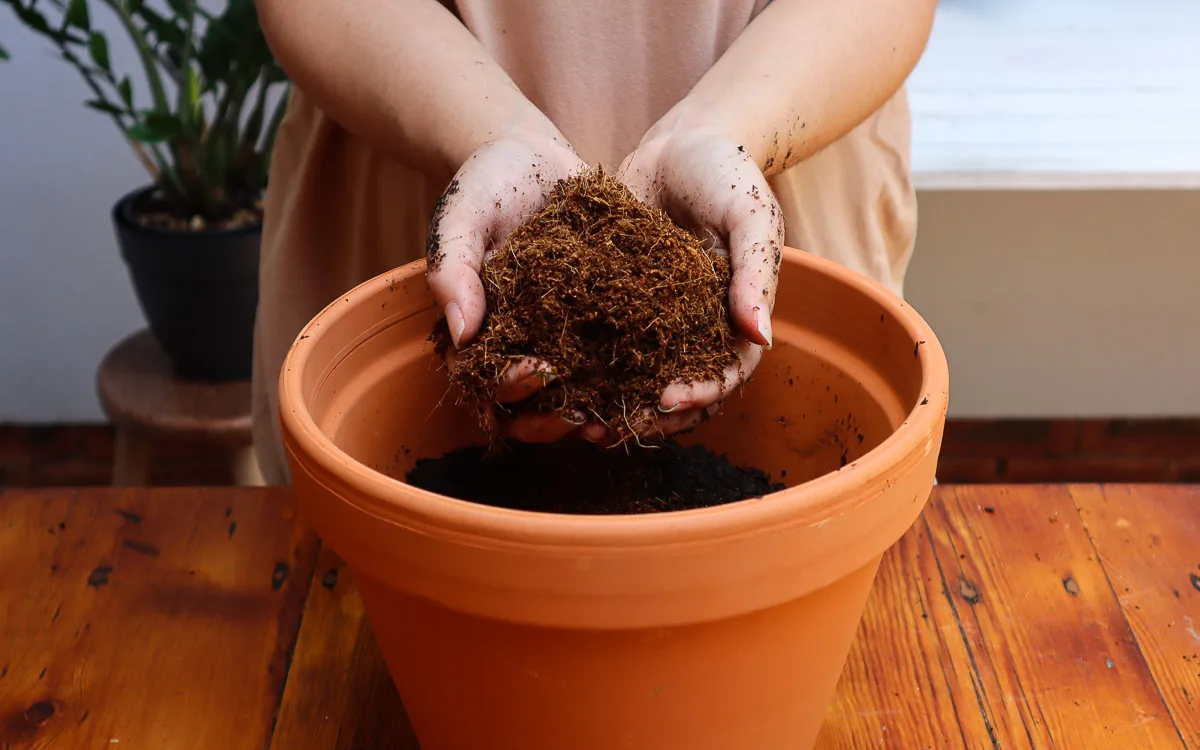
If you already have some peat moss in your shed, feel free to use that up first.
The Perfect Tomato Potting Mix Recipe
With all the components covered, it’s time to get mixing. These are the ratios I use for all my potted tomato plants:
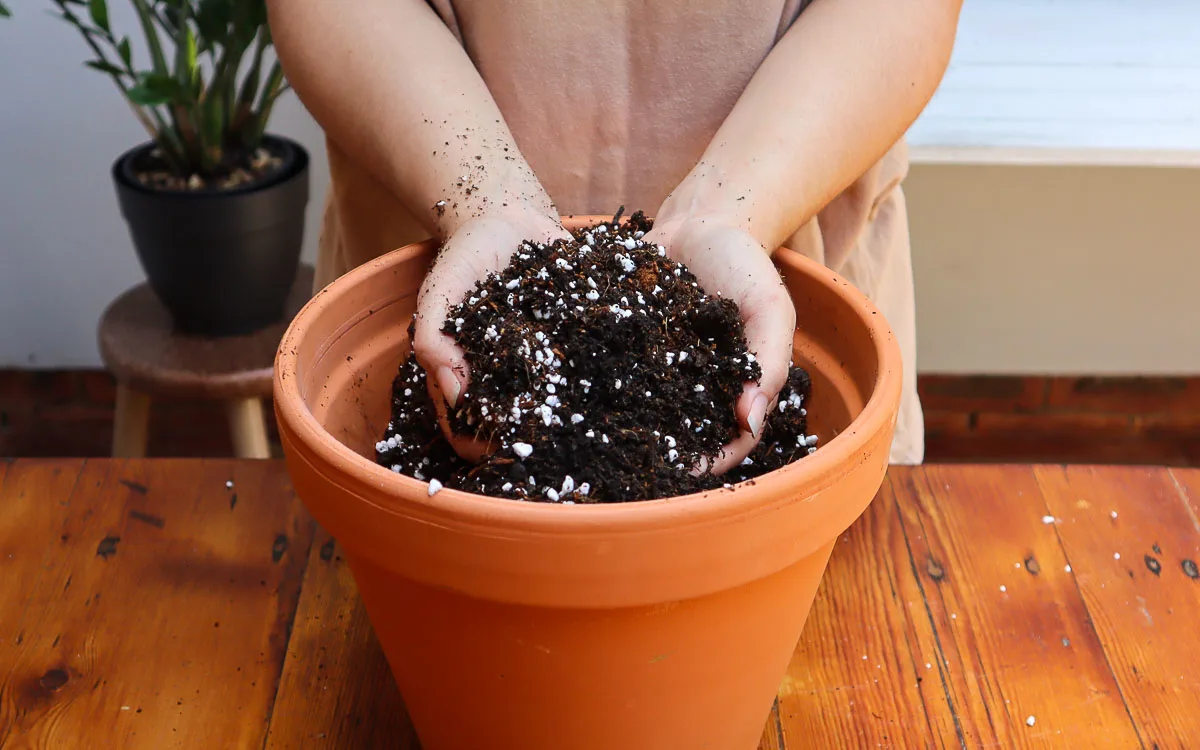
- 1-part potting mix
- 1-part compost
- 1-part perlite
- 2-parts coconut coir
I don’t include any fertilizer in this initial mixture – you can read the fertilizer guide here to find out why. But it is an important step to consider within the first few weeks of planting, once the roots of your seedlings are established.
The ratios can be adjusted slightly and components swapped out until you find the balance that works perfectly in your garden environment.
Signs Your Potting Mix Is Not Right
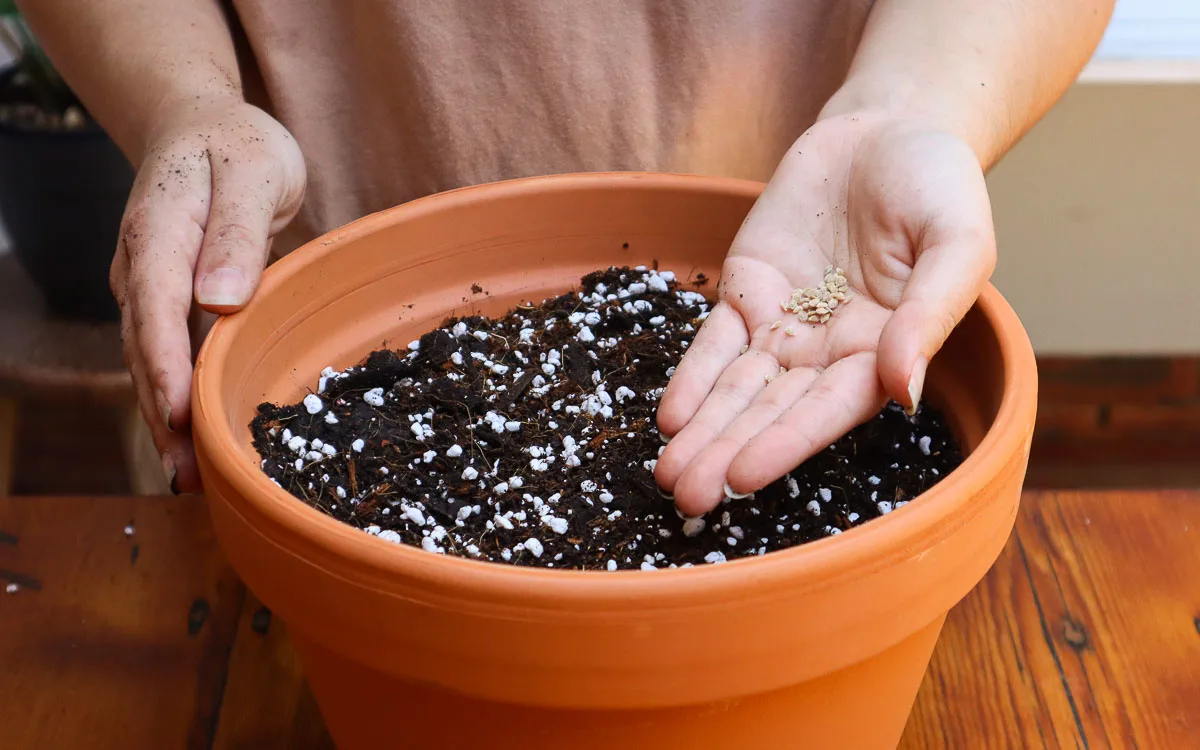
There are a few signs to look out for, indicating your potting mixture needs some work:
- Lack of drainage
- Drying out too quickly
- Wilting or yellowing leaves
- Stems falling over
Test the drainage levels of your mixture before planting to make sure it does not become waterlogged. In the early stages of growth before your tomatoes are established, you can adjust the mixture to fix any issues before root growth really kicks in.
Growing tomatoes in containers can be incredibly rewarding if you start with the right preparation. Give this potting mix a try and let us know how your plants perform this season.
